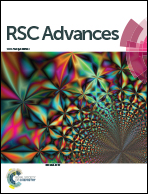Fabrication of PDMS micro through-holes using micromolding in open capillaries
Abstract
A modified micromolding process in open capillaries (MIMIOC) is put forward to pattern PDMS through-hole layers. In addition, a transfer technique, which includes changing bonding strengths between each layer by oxygen plasma treatment and surface silanization, is introduced to facilitate the release and bonding of through-holes layers. Its performance is verified by fabricating PDMS through-holes on SU-8 molds with 50–200 μm microstructures of cube, cylinder and rounded rectangle arrays. The feasibility of the micromolding process and its ability to achieve a planar PDMS layer with protruding angle less than 2° is proved by changes of interfacial free energies and wetting morphology of liquid in micro grooves. As a method with simple structure and low requirements for the equipment, MIMIOC would contribute to the development of MEMS devices by patterning PDMS micro through-holes in a simple and low-cost way.


 Please wait while we load your content...
Please wait while we load your content...